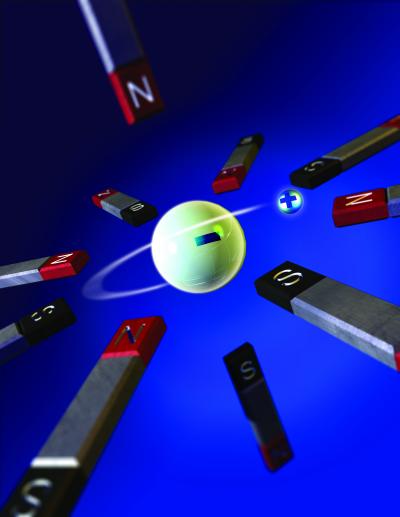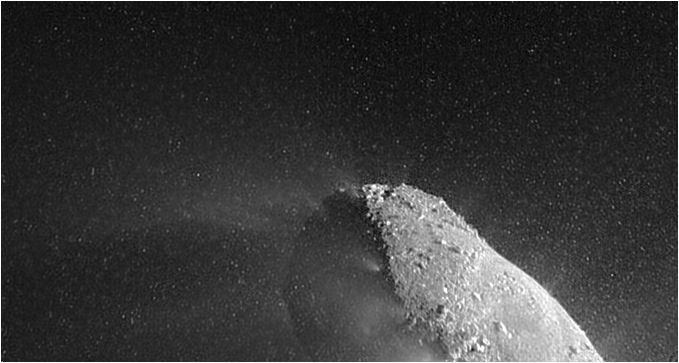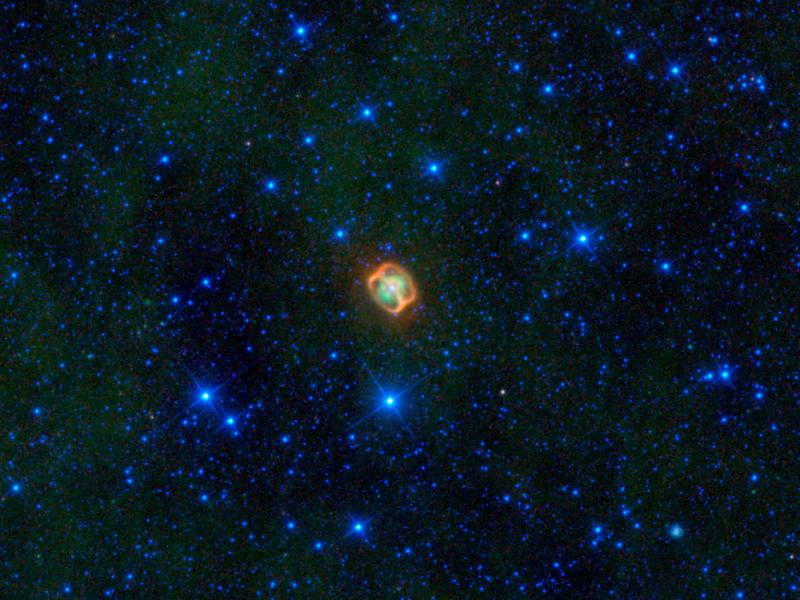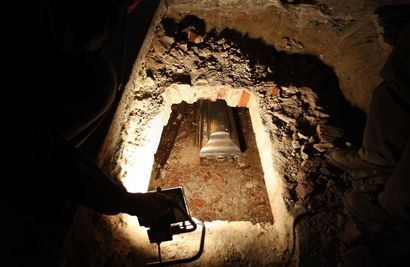
© Katie BertscheAn octupole magnet was critical to trapping antihydrogen atoms by using their small magnetic moments. This simplified version shows how the north and south poles of strategically arranged magnets can immobilize a neutral antihydrogen atom that has a magnetic moment equivalent to a tiny bar magnet.
Physicists working at the European Organization for Nuclear Research (CERN) in Geneva, Switzerland, have succeeded in trapping antihydrogen - the antimatter equivalent of the hydrogen atom - a milestone that could soon lead to experiments on a form of matter that disappeared mysteriously shortly after the birth of the universe 14 billion years ago.
The first artificially produced low energy antihydrogen atoms - consisting of a positron, or antimatter electron, orbiting an antiproton nucleus - were created at CERN in 2002, but until now the atoms have struck normal matter and annihilated in a flash of gamma-rays within microseconds of creation.
The ALPHA (Antihydrogen Laser PHysics Apparatus) experiment, an international collaboration that includes physicists from the University of California, Berkeley, and Lawrence Berkeley National Laboratory (LBNL), has now trapped 38 antihydrogen atoms, each for more than one-tenth of a second.
While the number and lifetime are insufficient to threaten the Vatican - in the 2000 novel and 2009 movie "Angels & Demons," a hidden vat of potentially explosive antihydrogen was buried under St. Peter's Basilica in Rome - it is a starting point for learning new physics, the researchers said.
"We are getting close to the point at which we can do some classes of experiments on the properties of antihydrogen," said Joel Fajans, UC Berkeley professor of physics, LBNL faculty scientist and ALPHA team member. "Initially, these will be crude experiments to test CPT symmetry, but since no one has been able to make these types of measurements on antimatter atoms at all, it's a good start."
CPT (charge-parity-time) symmetry is the hypothesis that physical interactions look the same if you flip the charge of all particles, change their parity - that is, invert their coordinates in space - and reverse time. Any differences between antihydrogen and hydrogen, such as differences in their atomic spectrum, automatically violate CPT, overthrow today's "standard model" of particles and their interactions, and may explain why antimatter, created in equal amounts during the universe's birth, is largely absent today.
The team's results will be published online Nov. 17 in advance of its print appearance in the British journal
Nature.




